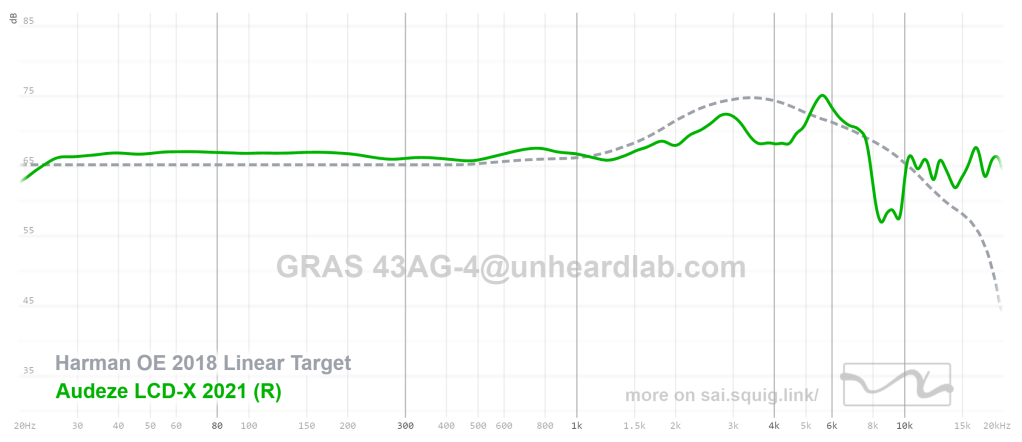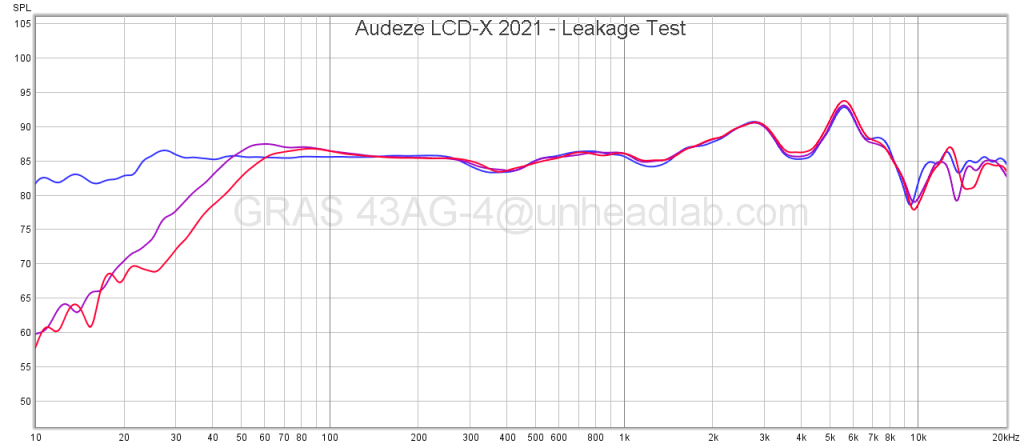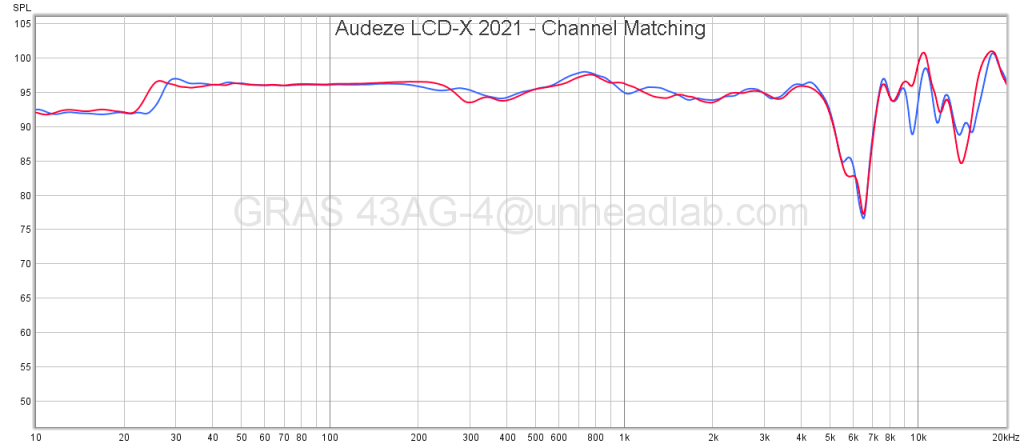
Intro:
Audeze headphones are known for a number of things, the first among which is perhaps their tuning, which many have regarded as ‘lush’, ‘excessively warm’ or just outright ‘esoteric’. Having sampled a couple of their earlier models, like the pre-fazor LCD-2 and the LCD-3 fazor, I largely concurred with this sentiment.
However, Audeze appears to be pivoting with their latest flagship, the LCD-5 released in late 2021 – a headphone some have even dubbed a ‘super planar HD650.’ This release seems to herald a new era of the Audeze sound. Around the same time, Audeze also updated their legacy LCD lineup, most notably in the ear pad design. This begs the question: how have these changes impacted the sound of their established models? Fortuitously, I have the opportunity to delve into this topic, thanks to the kind gentleman who also sent me the HD820 for review. My gratitude goes to you; you know who you are! 😉
Overall impression:
Despite being marketed as the ‘studio’ headphone in Audeze’s lineup, I still find the LCD-X mids to be discernibly coloured, though the signature Audeze ‘family sound’ is far less overt here. It’s not the most ‘enveloping’ or ‘lush’ type; rather, it’s just a tad laid-back, a quality nowhere as pronounced as in the previous LCDs. The bass is authoritative, delivering ample punch and slam, although it’s not the most agile type. The mids are mildly warm and full, with a clarity slightly surpassing that of the LCD-2 and 3.
The treble is where the LCD-X 2021 sets itself apart. It has taken a major step towards neutrality and clarity. A few minor peaks might be present, which could be a point of contention for Audeze purists. On the plus side, instruments have become clearer, and the sense of transparency has seen considerable improvement, with ample treble details and extension.
The bottomline is, I can enjoy the LCD-X 2021 without tampering the tuning with EQ.

link to the frequency response measurement & more comparisons
Tonal balance
Bass:
The LCD-X 2021 boasts the Audeze signature bass, with its broad scale of impact and a distinct sense of fullness. Both quantity and quality of bass are easily better than planars at similar price range, like the Hifiman Arya, not to mention dynamic headphones like the HD800S. Among kilobuck planars, the LCD-X excels in both bass slam and extension, making it a stand-out performer.
If one were to nitpick, it sometimes gives the impression of less distinct microdynamic contrast, possibly due to the bass leaning towards the ‘thicker’ style. I find this typical of Audeze’s LCD lineup, with the exception of the LCD-5 and perhaps the LCD-4. The LCD-X 2021 is not as pronounced in this regard, a trait particularly true for the old LCD2 pre-fazor version, although that’s precisely why some people adore them – for the heightened sense of bass density.
All in all, the bass is unquestionably a highlight on the LCD-X 2021. It’s deep, hefty, and delivers authoritative slams without taking the listen’s attention away from the other frequencies. While it may not be the most agile kind, it is perhaps a trade-off rather than a flaw.
Mids:
Those familiar with Audeze’s older LCD models will know their housesound from the mid-range. They deliver an intimate, up-close feel while often smoothing out the grainier and sharper harmonic tones in the voice. It’s as if the singer is personally serenading you.
The LCD-X 2021 takes a slightly different tack. While maintaining some colouration, the tuning here serves to subtly enrich the texture and add a touch of ‘velvety’ softness to the vocals. It is decisively full-bodied, with a vibrant richness to both vocals and mid-range instruments like pianos and acoustic guitars. Vocal harmonics are more pronounced than in older models like the LCD-2 and 3, although some sibilance can be occasionally detected.
When it comes to vocal performance, my benchmarks are the legendary HD600 and the more ‘modern-feeling’ LCD-5. In comparison, the LCD-X 2021 could still use some EQ adjustments, but they are much more well-balanced than previous generations.The colouration in the LCD-X 2021’s mid-range is far less dramatic, leaning towards a more natural sound that will likely appeal to a wider audience.
Treble:
The treble performance of the LCD-X 2021 marks a discernible shift, edging closer to the kind of ‘airiness’ often associated with Hifiman planars. However, the Audeze approach seems more cautious in the upper treble region, avoiding the ‘sharpness’ or ‘ethereality’ that can sometimes characterise Hifiman models. The transition from lower-treble to air and sparkle regions is also smoother than typically found in lower-end Hifiman models like the Sundara.
That said, the LCD-X 2021 is not without its nuances. Peaks around 6kHz and 12kHz add a certain brilliance to the sound, but they can also introduce sibilance, particularly in female vocals, such as in Lana Del Rey’s “White Dress.” Thankfully, the sibilance remains within a reasonable level, although their very presence is perhaps a surprise to some Audeze fans.
All in all, it is still not a typically bright headphone – the dip around 4kHz eases some of the excess energy at around 6kHz, and the bass fullness helps balance out the whole sound profile. It walks a fine line between sibilant and articulate highs: a minor 1-2dB extra could tip the balance. On poorly recorded tracks, this could become a concern. This might be why Audeze markets it as a monitor headphone: its relatively uncoloured treble is beneficial for identifying imperfections in the recording.
Other qualities:
- Soundstage and Imaging:
- The soundstage of the LCD-X 2021 is commendably expansive, particularly in terms of width, a trait it shares with other LCD models. Although the 2021 revisions have made the pads slightly less roomy, they’re still significantly thicker than those from other brands. This design feature creates a spacious frontal auditory cavity, allowing sound waves ample ‘breathing room’ between the ears and the diaphragm – a factor that I often find positively correlates with soundstage size, although this isn’t a universal rule.
- When it comes to imaging, however, the LCD-X 2021 isn’t quite as strong. Instrument placement and the sense of distance within the soundstage sometimes lack precision. Vocals, while proximate, don’t always achieve the pinpoint clarity one would find in headphones like the Hifiman HE6se. Furthermore, the separation between instruments can be somewhat indistinct when the music features abundant bass and mid-tones, resulting in a general impression of elements blending together rather than being clearly distinct. This could be a matter of personal preference, however.
- Clarity:
- In terms of clarity, the LCD-X 2021 performs admirably, holding its own within its price range. It outshines mid-fi contenders like the Sundara and the Edition XS, although it may not quite match the acuity of the Hifiman Arya. Comparing to previous LCD models like the LCD-2 pre-fazor, I find the LCD-X 2021 to have taken quite a big step above.
- Overall, it sits on a similar footing to the Ananda Stealth, but with a distinct advantage in terms of punchy bass and richer mids. The transition from mids to treble is smoother as well, which results in less pronounced sibilance than is often found in Hifiman planars.
- Dynamics and Impact:
- The LCD-X 2021 is solidly competent within the planar magnetic category. While it can’t match the LCD-4 in terms of weight and slam, or the LCD-5 in the areas of speed and microdynamic nuance, it nonetheless holds its own remarkably well at its price point. There are no issues with dynamic compression or lacklustre impact. Rather, the LCD-X leans towards delivering a more robust, meaty ‘wall of sound’ type of bass.
- Its linearity is also commendable; the diaphragm is capable of moving a large volume of air to create impactful bass. This makes the LCD-X highly receptive to bass boosts for those keen on EQ adjustments. I found that it handled a +10dB Q0.5 boost at 30Hz with ease. If one were to nitpick, the microdynamic nuance in the bass could use some further improvement, as it tends to err on the meatier side, comparing to the lightening fast performance on the LCD-5.
Conclusion and value:
The Audeze LCD-X 2021 presents itself as a very competent planar headphone. While it doesn’t neccessarily eclipse its more costly siblings like the LCD-4 or LCD-5, it certainly holds its own at its respective price point. The sound signature tends to be slightly warm with full-bodied mids, and the treble has taken a step towards neutrality compared to older models, a shift that will likely please those looking for greater detail and clarity. They perform admirably when it comes to punch and dynamics, allowing for considerable EQ adjustments should you wish to tweak its sound profile.
Priced at $1,199 USD, the LCD-X offers great value for its robust build quality and its largely unproblematic tuning, not to mention the potential for EQing. While it may not yet qualify as the ‘true reference’ headphone that a music producer might just pick up for immediate professional use, it’s palpably closer to that ideal than any of Audeze’s previous offerings. With some EQ adjustments, the LCD-X 2021 stands as an outstanding all-rounder, boasting strong technical capabilities and excellent build quality.
Pros: rich and full midrange; authoritative bass; improved treble neutrality comparing to older models; expansive horizontal stage; high EQ adjustability;
Cons: colouration in the mids remains discernible; imaging can be more pinpoint; occasional sibilance may catch Audeze fans off guard; heavy weight;
MEASUREMENTS
Frequency Response Average:

note: bass extension cutoff is 10hz instead of 20hz on the extende frequency response measurement, so as to fully capture frequencies which though may not outside of ‘audible range’, may be felt by our ears, bones and muscles and enhance the sense of ‘impact’.
Positional Variation:

note: this graph shows how the tonality might be affected when you wear the headphones differently on the head.
Leakage Test:

note: this graph demonstrates how a small leakage (simulated using thin-armed glasses) can result in FR change.
Impulse Response:

note: impulse response contains information about transducer movement when a test tone is played.
Channel Matching:

note: channel matching graphs DOES NOT RELATE TO SOUND PROFILE.
a specialised configuration is used to capture channel differences to mitigate the interference from positioning on rig and the asymmetricity in GRAS pinnae design (legacy of KEMAR).
the Left (blue) and Right (red) channels are measured on a flat plate coupler with an IEC60318-4 ear simulator.
END OF THE ARTICLE
Disclaimer: all the headphones tested here are my personal units unless otherwise stated. All the links and recommendations provided are not associated with me in any financial manner.

I see the Oppo PM-3 in your measurements. Do you intend to make a review? Or can you give an opinion about these headphones?
LikeLike
Hey there.
I haven’t spent too much time with mine. My initial take is that they’re pretty solid headphones, especially given they’re closed-back. Tonal balance is very good. I would probably rate them around the same level as the Aeon Closed X, or even a bit better. If I can around it I may write a short article for it. After all it’s a discontinued product and quite hard to come by nowadays, especially in original condition as the ear pads are made of protein and wear out pretty quickly.
Hope that helps.
Sai
LikeLike
I’d love to hear how these compare to the NAN-7, particularly in bass impact and detail.
I’m currently trying to decide whether to buy LCD-X now, or save for the LCD-5s when I saw your review of the NAN-7 (unfortunately nowhere to try them here in Australia). Very happy to EQ as needed.
Thanks
LikeLike
Hey there fellow Aussie! 😉
Both the LCD-X and NAN-7 are stellar in their own right, but they’re like apples and oranges when it comes to design principles. The LCD-X leans more towards high tension in its drivers, giving it a more controlled sound. On the other hand, the NAN-7 shines when it comes to bass dynamism and impact; it’s got a deeper, visceral punch. The LCD-X bass is more linear while a bit elevated over the rest of the frequencies, making it feel dense and ‘meaty’. In terms of clarity, the NAN-7 takes the cake, but the LCD-X is no slouch. It’s more resolving than older models like the non-fazor LCD-2 or LCD-3.
As for the LCD-5, it’s like Audeze took a whole new direction. They’re super clear, articulate, and fast, which is a departure from their earlier tuning. You might not even need to EQ them much, although a bass shelf and minor tweaks could still take it further.
What headphones are you currently using?
LikeLike
Thanks for the detailed response Sai!
Currently on the Hifiman OG Ananda’s – they are great, love the detail and the staging, but really are lacking in meat/impact, even with some EQ.
I like to listen to prog metal, hard rock, and then a bit of classical at times also. Really looking for a bit more engagement than the Anandas, but also don’t want to give up on any of the technicalities (I do a bit of hobby recording/mixing/mastering in my free time). If anything, I could happily sacrifice some of the soundstage width for better depth and imaging.
I’ll be driving through the JDS Element III mk 2 (boosted verison – can do around 1100mw into 14-16ohm)
LikeLike
Ah, the Ananda OGs are solid headphones. I used to pair them with the Focal Clear, which seems to tick your boxes quite well. They’re warm, engaging, and pack more of a punch than the Anandas, making them a great fit for the genres you mentioned. I recently had the chance to review the Clear MG Pro as well, which sound a bit more neutral to me than the Clear OG so they might be slightly better fit if you use them for recording etc.
If you’re keen on sticking with planars, the LCD-X would indeed be a good choice, especially since you’re cool with EQing. Another option might be the Verum One MK2, although they might be a bit too ‘neutral’. They’re dubbed the planar HD600/6XX for a reason. And if you’re thinking of going all out, the LCD-5 is the pinnacle of that line, offering top-notch clarity and precision.
LikeLike
Thanks – I did try out both the Clear and Utopia a little while back – I agree with everything you said, except that I think I like the planars too much – The Focals definitely had a punchy and engaging sound though!
The Nan-7 are just too risky given I can’t try them out and they’ll be around $1400 AUD landed. It seems like LCD-X are the most sensible choice. I’ll have to go try them again, along with the MM-500 and LCD-5 – just to make sure 🙂
Thanks again!
LikeLike